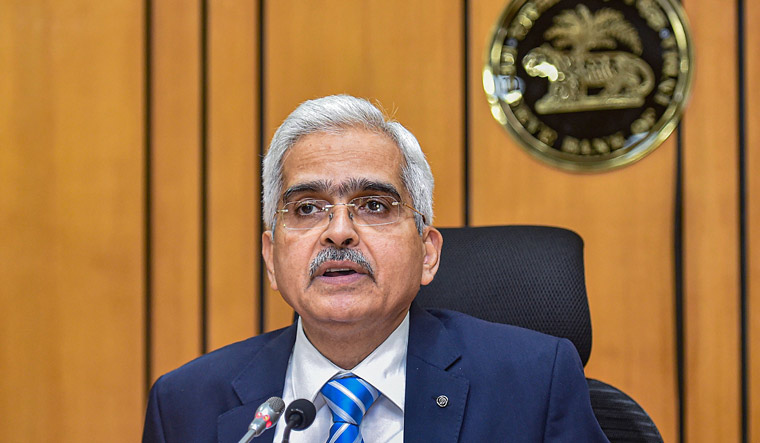The Monetary Policy Committee (MPC) of the Reserve Bank of India on Wednesday, expectedly raised the repo rate by 50 basis points (0.50 per cent). All the members of the MPC voted in favour of this increase in repo rate, and to remain focused on withdrawal of accommodation to ensure inflation remains within the target going forward, while supporting growth.
Taking into account the surprise 40 basis points rate hike announced in May and the hike on Wednesday, the benchmark rate at which RBI lends banks, will now rise to 4.90 per cent, indicating the clear priority for the central bank at this juncture is to ensure inflation is brought under control.
As RBI Governor Shaktikanta Das put it, “experience teaches us that preserving price stability is the best guarantee to ensure lasting growth and prosperity.”
Central banks globally have been tightening their monetary policies and raising interest rates amid a surge in inflation, in the backdrop of supply-side bottlenecks due to Covid-19, growing geopolitical uncertainties and a spike in cost of crude oil and other commodities following the Russia-Ukraine conflict. As margin pressures have risen, companies from automobiles to consumer goods have passed on price increases over the last few months.
Das said, similar to the timely actions to limit the economic damage emanating from the Covid-19 pandemic, the RBI will continue to be proactive and decisive in mitigating the fallout of the ongoing geopolitical crisis on India’s economy.
“We have already reprioritised our policies to control inflation, without losing sight of the growth requirements. We will remain focused on bringing down inflation closer to the target and fostering macroeconomic stability,” he said.
RBI is mandated to maintain inflation in the 2-6 per cent band. Retail inflation in April touched an eight-year high of 7.79 per cent, which was well above RBI's comfort band.
The RBI had already raised its inflation forecast from 4.5 per cent to 5.7 per cent in its April MPC meeting. On Wednesday, it raised it further to 6.7 per cent for the current financial year ending March 2023.
It expects inflation to stay above the upper end of the target in the first three quarters of the current financial year, with June quarter inflation seen at 7.5 per cent and September quarter inflation expected at 7.4 per cent. It is then expected to moderate to 6.2 per cent in the third quarter and 5.8 per cent in the fourth quarter. What must be noted is that these inflation expectations assume a normal monsoon this year and crude oil prices averaging $105 a barrel.
The MPC noted that while domestic economic activity was gaining traction in a challenging global environment, inflation pressures had intensified further.
“The upside risks to inflation as highlighted in the April and May 2022 policies have materialised earlier than anticipated – both in terms of timing and magnitude. Inflationary pressures have become broad-based and remain largely driven by adverse supply shocks. There are growing signs of a higher pass-through of input costs to selling prices,” said Das.
Even as the central bank raised its inflation forecasts, the governor was more upbeat on the growth front. The GDP growth forecast for 2022-23 was retained at 7.2 per cent. GDP growth in the first two quarters of the current financial year is projected at 16.2 per cent and 6.2 per cent respectively. In the December quarter and March 2023 quarter it is seen at 4.1 per cent and 4.0 per cent respectively.
“The forecast of normal south-west monsoon should boost kharif sowing and agricultural output. This will support rural consumption. The rebound in contact-intensive services is expected to sustain urban consumption,” said Das.
RBI surveys indicate capacity utilisation in the manufacturing sector increased further to 74.5 per cent in the fourth quarter of last year from 72.4 per cent in the third quarter, and is likely to increase further this year.
Rising capacity utilisation and government’s capital expenditure push should help strengthen investment activity, in turn leading to a pickup in bank credit, said RBI.
Merchandise exports have remained buoyant with double digit growth for the fifteenth successive month in May, noted Das.
Several commercial banks have already raised their lending rates since the repo rate hike in May. Wednesday’s additional repo rate hike will further push up lending rates in the coming months. Bank deposit rates are expected to continue their rising trend as well.
Following RBI’s 50 bps rate hike, 10-year government bond yields were trading around 7.45 per cent, down from Tuesday’s close of 7.51 per cent. Equity markets were slightly up in the noon trade, with the BSE Sensex at 55,214.18, up 107 points or 0.2 per cent.





